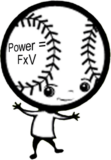The “T” position is one of the most important positions or “shapes” of the pitching delivery, and when it is off, velocity and location errors can occur. It is a checkpoint in the delivery and is the last position the body is in before the body starts rotating to square-up to the plate.
The “T” position is the position the glove and pitching arm move into immediately following the down-and-up hand break movement. This positioning of the shoulders is happening simultaneous to the stride. When the stride foot makes contact with the mound, the arm/shoulder line is in the “T” position. This is the moment when the glove arm is closest to the plate, and the ball is furthest from the plate.
Why is this position so important? And more importantly, why, when done correctly, can it have such a positive cascading effect on the remainder of the pitching motion?
The objective of the pitching delivery is to position the ball for acceleration and release, and the movements that lead up to that moment must be as efficient as possible. The body has to move downhill, in a straight line, and then rotate, in segments, to position the ball for release. These motions must be in alignment and sequenced with proper timing.
The straight-line direction downhill can be obtained with a straight shoulder line (the horizontal line of the “T”), and the rotation to square -up to the plate can be enhanced by the vertical axis of the spine (the vertical line of the “T”).
Here are some possible scenarios that can occur when the shoulder line is off:
- If the glove arm is too high, the pitching arm might end up too low.
- If the glove arm is too low, the pitching arm might be too high.
- When the glove arm is too high, the pitcher may have to rush the pulling of the glove arm to preserve a sense of balance. This movement might occur before the stride foot makes contact. This will cause premature rotation of the upper trunk and will result in less accuracy. The upper trunk is the last segment that positions the ball for release.
- If the throwing arm is too low, the shoulder cannot effectively get into maximal external rotation, compromising velocity. The shoulder joint’s range-of-motion is ideal at shoulder height.
- When the shoulders are in an imbalanced position, the head can pull to the non-throwing side causing a high release point.
- When the shoulders are in an imbalanced position, the head may need to preserve balance by pulling to the non-throwing side and causing excessive tilting. This can cause the front leg to become unstable during the delivery, in addition to creating sideways motion instead of forward motion.
This May edition of on the hill is dedicated to my Mother, Olga, who has been in heaven since last January, 2007. Happy Mother’s Day Mommy and thank you for raising me to be smart and brave. I thank you, love you, and miss you every day! I hope you are proud of me!

